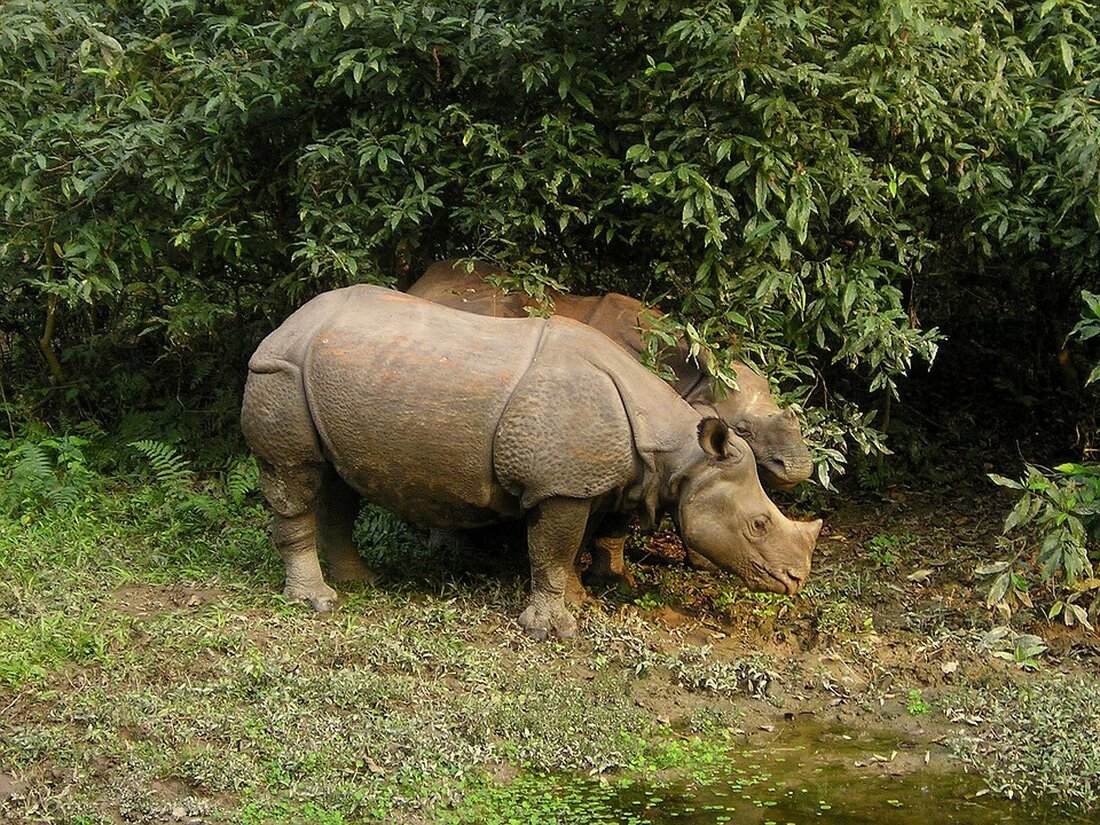70 rhinos from a controversial breeding system in Rwanda released
70 White rhinos bred in captivity were transported from South Africa to Rwanda as part of a resettlement project. A glimmer of hope for species protection in Africa.

70 rhinos from a controversial breeding system in Rwanda released
In an exciting initiative, African Parks transported 70 southern white nashorns from South Africa to the Akagera National Park in Rwanda in June. On an impressive journey of 3,400 kilometers, which included cranes, trucks and even a Boeing 747 aircraft, the majestic animals were transferred to a new home, as part of a project that aims to relieve them back into the wilderness.
The challenge of translocation
"The shift of 70 rhinos over the continent is a risky matter," said Martin Rickelton, head of translocations at African Parks, in an interview with CNN. So far, however, the animals seem to be able to cope well in their new environment. "All reports are positive," added Rickelton.
The animals that can weigh over 2,000 kilograms come from a controversial breeding program that was started in the 1990s by real estate developer John Hume. Hume campaigned for the legalization of rhino trading for years and had accumulated great stocks of Horn by cutting the horns without damaging the animals to flood the market and to put wilder in the barriers.
Problems of horn trade
But when he was out of financial resources and the horn trade continued to be internationally prohibited, he offered the Nashorns for sale in 2023. "I invested about $ 150 million in the project - the biggest cost feature was the surveillance measures. Now I have nothing except 2,000 rhinos and 8,000 hectares of land," he told the AFP.
news agency at the timeHe did not get a single bid. African Parks, a non -profit organization that manages 23 protected areas on the continent, jumped in and acquired for an unspecified sum of what was the largest rhino breeding facility in the world, with the aim of releasing the animals into the wilderness over a period of ten years.
an important step for nature conservation
Translocation represents the first intercontinental move as part of African Parks' Rhino Rewild Initiative. "It is a very important milestone," says Taylor Tench, a senior analyst for wildlife guidelines in the Environmental Investigation Agency in the USA, which was not involved in relocation. "This is definitely a great development with regard to the efforts of African Parks."
Today there is only about South white nashorns, which are classified as "endangered" on the red list of the international Union to preserve nature. The purchase of 2,000 rhinos by African Parks represents more than 10 % of the remaining population.
The effects of wild
Despite the international trade in mental horns, which has been banned under the Washington Species Protection Agreement (Cites) since 1977, the demand from Asia, where the horn incorrectly regarded as a status symbol or remedy for various diseases
Wilderer sometimes kill a rhinoceros immediately or anesthetize it before cutting it off the horn, which often leads to large parts of the animal face and bleed. In South Africa, where most of the population lives, 2024 420 Nashörner . In the first quarter of this year, more than 100 killed.
Hope for a better future
tent notes that the rhino winery was widespread on the continent from 2012 to 2015, and emphasizes: "A lot has been achieved since then." He adds that Kenya did not lose any rhinos last year and that the poaching in Zimbabwe decreased considerably. Nowadays, the poaching mainly focuses on South Africa and Namibia.
In order to better counter this problem, Tench demands that more state resources are made available to combat organized criminal networks behind the poaching and international trade in rhinoceros.
Rickelton reports that there are a number of future resettlement projects in different phases. He adds that there is a strong framework to ensure that the locations that the rhinos are absorbing offer a suitable habitat, safety and sufficient means to maintain animals.
from planning to implementation
The move to the Akagera national park required over a year planning and approval time. The costs for the relocation of each rhino, including three years of surveillance and management afterwards, are about $ 50,000 (the move was supported by the Howard G. Buffet Foundation).
The animals were initially brought from the breeding system to the private game reserve Munywana in South Africa to get used to conditions that are more similar in Akagera. The rhinos were then invited to individual steel boxes, brought to Durban with a truck to the airport and loaded with a crane into a Boeing 747.
After arriving in Kigali, Rwanda, the rhinos made the last part of their trip on the street. Now you have to get used to your new environment. You will be monitored by a veterinary team for several weeks.
measures to protect the animals
Measures such as a dog unit , which is supposed to reduce the poaching, are active in the Akagera national park and have set the poaching to "almost null" Park.
There is reason for optimism. In 2021, African Parks moved 30 rhinos from a private game reserve in South Africa to Akagera. Since then there have been 11 offspring. With the addition of 70 other rhinos "we have now established a genetically stable stable herd of rhinos," says Rickelton.
He adds that it is worth seeing the rhinos from their boxes at the end of their trip: "That makes months of hard work, frustration and challenges really worthwhile." Rickelton concludes with the words: "It is a story of hope in a world in which there is not too much positive things."

 Suche
Suche
